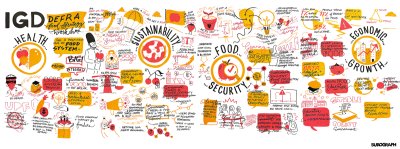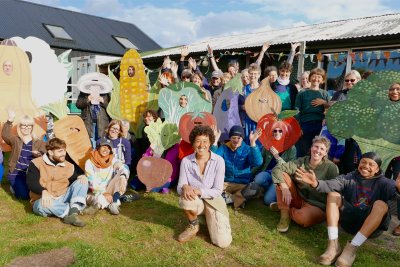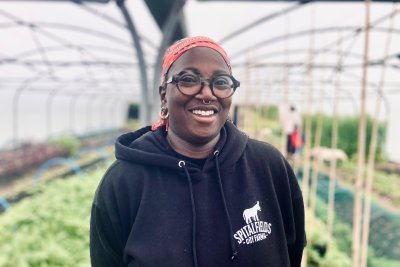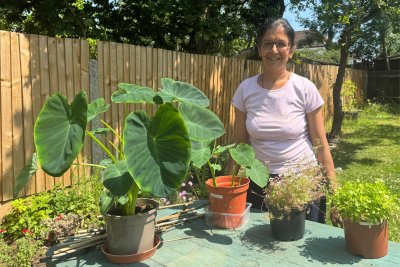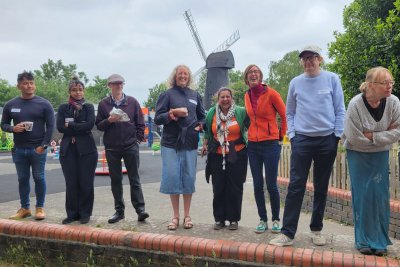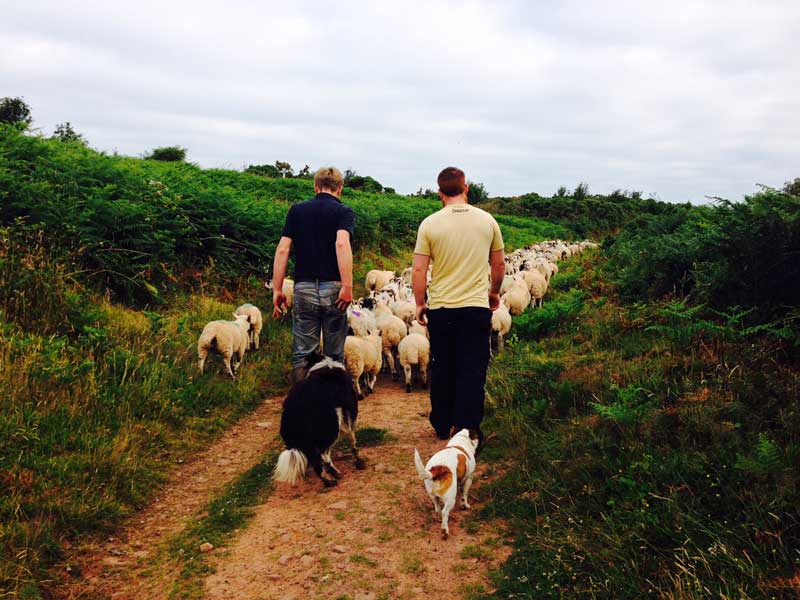

LEGOs, Landscapes and Catchments: delivering a new farm payment scheme
The rich debate about how we deliver new farming and land management support after we leave the CAP is getting interesting. As we anticipate the White Paper on a new UK Agriculture Bill in 2018 choices are presenting themselves. How will new schemes work out on the farm? How will decisions actually get made? The following are ideas for the discussion ahead.
A three tier delivery mechanism
It has been constructive to see common ground between many of the stakeholders working on this - from the NFU and CLA to conservation and animal welfare groups. Recent reports by Sustain, the Wildlife and Countryside Link and Natural Capital Committee add more detail to the mix of ideas. Maintaining a significant level of support to deliver what we need and the ‘payment for public goods’ approach are pretty much accepted as desirable though we will see much debate over what the ‘goods’ actually are.
Equally complicated will be how can measure them – natural capital valuing and beyond. The public will need to see value delivered to feel their investment (tax revenue) is being well spent. That will need effective and useful on farm indicators and assessment.
Jumping ahead to dodge all that cluttered debate about ‘goods’ and measurement, it is interesting to contemplate how such schemes will actually be applied in practice. What does it look like on the eight floor at DEFRA and out in the farmyard? What are the governance methods?
At a meeting on farm indicators organised By Farmwel and the Farm Animal Initiative, I was interested to hear the ideas of Merrick Denton-Thompson, Chair of The Landscape Institute, someone who has worked through a number of decades of farm, land and planning policy. He proposes a new National Rural Land Management Policy articulated at a landscape scale that is easily interpreted and actioned by individual farms. Sustain’s principles for future support - based on health and wellbeing as well as economic and environment goals for farming - chime well with his. Publicly agreed outcomes could be delivered by collaboration between public, private and voluntary partners and finance.
There is a common call for pilots and trials for new approaches and learning from current and past agri-environment schemes. The Farm Cluster approach by Natural England and GWCT is one such pilot. As I have noted before it would be a mistake to call for simplicity as an outcome - we need context specific, well managed and adequately resourced schemes. Experienced agri-environment expert Steve Peel also made this point forcefully in his blog about the skills, timeliness and attention to detail needed if we want to actually achieve anything.
Looking ahead, what could the delivery structures look like to supply what’s needed? Some of what is laid out below is drawn from Merrick’s proposals. The ideas can be defined in three levels:
- how national governments would be involved
- the role of local communities, statutory bodies, the public
- what does it mean in the farmyard
National - setting the overall objectives
At the national government level, each government could have a National Rural Land Management Policy integrating farming and the environment, forming the policy reference for public goods and natural capital and fitting with an overall vision for food and farming. An overarching UK framework would be needed setting an agenda and targets for the public money to be spent wisely and to ensure cross border priorities are achieved such as on climate, landscape and mobile species.
This would be signed off by the Secretary of State’s and Devolved ministers and would set the framework for landscape plans and objectives.
Local - Landscape approach to governance and allocating resources
Given that central government is not set up to handle local and live information about land use changes and opportunities some have proposed a local level of governance ie Local Environmental Governance Organisations (LEGOs), which would provide funding for locally valued ecosystem services and ‘fill in the gaps’ that arise from the operation of the national funds.
One approach could be that the LEGO could be grouped via National Character Areas (NCAs) which divide England into 159 distinct natural areas. Each NCA is defined by a unique combination of landscape, biodiversity, geodiversity, history, and cultural and economic activity. Their boundaries follow natural lines in the landscape rather than administrative boundaries. They would help form the framework for agenda setting, delivery, partnership working, integrating - public sector, private sector and voluntary sector collaboration. The maps describe what is there, appreciated and understood by communities and the different stakeholders.
They can be used to engage the public, crucial going forward and as blue print to build plan and vision for specific areas. For protected areas additional resources and information already exist to deliver additional protection, support and advice.
Whatever the acronym, the joint committee could be made up of local community reps, farmers and landowners, park authorities, conservation bodies, private sector and planners. They could use the National Character Area Maps and other objectives defined by the group in facilitated meetings to devise a Character management plan for the area which would be signed off by the Secretary of State but which would remain a live document subject to reviews and change. From this individual plans with appropriate indicators for progress for each farm in the area would be drawn up using the priorities.
Where needed, the plans would focus on specific issues for a specific area with general wildlife and environmental assets and characteristics – what did and does and could be protected, enhanced and restored and by whom.
Farm – Land Management Contract
At the farm/estate level, the scheme would ideally have a single point of contact representing the public sector with each farm/farmer, with the back office support from Government Agencies, Government Departments and Local Authorities. This point of contact could combine with a private accredited body maybe. But they would need a new set of skills, knowledge and would build a positive but impartial relationship with the farmer.
A farmer would develop with this contact, a multi-annual whole farm/estate Land Management Scheme agreement - one that farmers can work through with their advisor so it fits the farm and the catchment and the landscape as needed.
Farmers would do much of the on-going assessment themselves, and would have training if needed. But there would need to be an initial agreement meeting, spot checks and an annual survey to discuss issues, look at new opportunities, compliance and so on.
The idea often mooted of ‘earned recognition’ – if you’ve had a visit by a Red Tractor standard rep and got the all clear you are okay to go - is not really fit for purpose as this is not just about compliance. As the blog of an ex Natural England staffer and the comments thread below it show – it all depends on the quality of the science, how it is shared and the scheme being resourced sufficiently to ensure a sustained ‘relationship of trust between adviser and land manager’. As he puts it “The story of agri-environment since 2005 has been one of tragically unfulfilled potential” and we should ensure we get the new system right by testing and pilots in the 2 year transition period.
One idea could be to equip each farmer with a new (waterproof) digital iPad ready loaded with key information, self-checking forms, coupled with training guides, access to wildlife identification tools, and even farm business data. Not as a gimmick but a way to ensure access to information and uniform, digitally accessible data is being recorded.
Data. There I have mentioned it and it will clearly be a key feature; one for another blog.
Finally some questions to challenge this delivery model:
- How would a joint committee at a landscape level be set up? Clearly it would have land managers and reps from statutory bodies (NE, EA, FC) but who else? The NFU, CLA but what about other land managers, the public in general and those interested in access, air pollution, good food (such as the Sustainable Food Cities network);
- Would the diversity of farms be protected and enhanced under this model? There is a need - well documented recently by CPRE - to protect that diversity and crucial to stop the loss of farms in England in particular.
- Can a national plan incorporate health objectives at a local level such as getting more fresh fruit and vegetables into schools so encourage more mixed horticulture for procurement, ensuring accessible countryside for all; and other similar measures that have wider public wellbeing benefit?
- Could local partnerships that emerge deliver on wider objectives such as providing a hub for marketing and coordination of delivery for local outlets, possibly working with the urban hinterlands?
- Is this really too complicated?
Please send any comments to vicki@sustainweb.org @vickihird
photo credit Ripple Organics by Miles Willis
Sustainable Farming Campaign: Pushing for the integration of sustainable farming into local, regional and national government policies.
Sustain
The Green House
244-254 Cambridge Heath Road
London E2 9DA
020 3559 6777
sustain@sustainweb.org
Sustain advocates food and agriculture policies and practices that enhance the health and welfare of people and animals, improve the working and living environment, promote equity and enrich society and culture.
© Sustain 2025
Registered charity (no. 1018643)
Data privacy & cookies
Icons by Icons8
